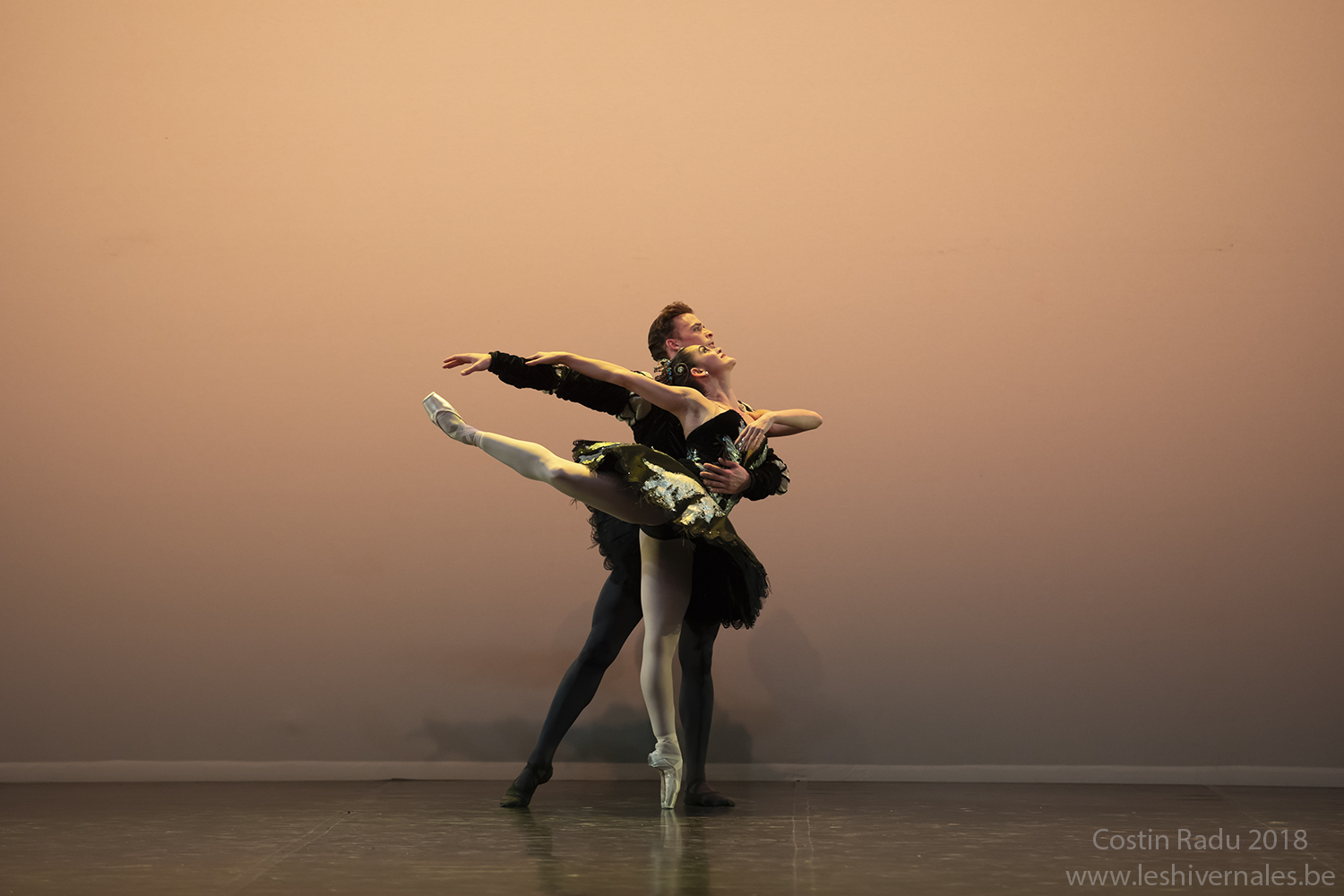ST. LOUIS—With their second edition of “An Evening of Ballet Stars,” Dance St. Louis aimed to find out if lighting does, indeed, strike twice in the same place. Last year’s inaugural program featuring prominent principal dancers at Washington University played to a sold out crowd; on Sept. 28, the Edison Theatre was likewise heartily filled in for a new line-up of couples and a whole new program.
The evening began with Saint Louis Ballet’s Lauren Christensen and Jordan Nelson performing the pas de deux from Gerald Arpino’s 1981 ballet “Light Rain.” It was the entr’acte to the presentation of the Annelise Mertz Visionary Award in Dance, given this year to Saint Louis Ballet artistic executive director Gen Horiuchi. Horiuchi spent the majority of his acceptance speech promoting the company’s upcoming season; it’s clear he does not shy away from giving his dancers a challenge. “Light Rain” is no exception, the duet serving as a show piece for any couple that does it well, not to mention Arpino’s talent as a choreographer. To be sure, “Light Rain” is dated, so clearly a product of its era, and it’s probably unfair to watch anyone else do this piece after seeing Valerie Madonia or Calvin Kitten in the lead roles. Still, Christensen and Nelson handle this difficult piece adequately, showing enough steadiness and confidence to leave room for some of this pas de deux’s blush-worthy eroticism to shine through.
The rest of the “Evening of Ballet Stars 2” cast were visitors to St. Louis, four couples representing all corners of the country. With such a prestigious line-up of dancers, choosing your favorites really came down to the rep they brought with them, which ranged from 19th century classics to contemporary works from the past few decades.
And it was gratifying to see so many tutu-free duets, the best of which was The Joffrey Ballet’s Christine Rocas and Dylan Gutierrez in an excerpt from Edward Liang’s “Age of Innocence.” There’s a timelessness to Liang’s choreography, but while he tugs at antiquity with Edwardian costuming and a gentle score mixing Thomas Newman and Philip Glass, there’s something really equalitarian about Rocas and Gutierrez’s partnership. That’s not to say Gutierrez doesn’t flip and tangle his partner every which way, but Rocas seems exalted, not objectified, as is so often the case in ballet duets. In a moment of silence and stillness, Rocas jumps backwards into Gutierrez’s hands, her back against his palms as he ever so slowly lowers her and then propels her forward with energetic brilliance. Honestly, that might have been, for me, the best moment of the night.
But there was plenty to be admired in the classic grand pas de deux performed by the Washington Ballet’s new darling, Katherine Barkman and Carlo Perez in Petipa’s Black Swan pas de deux from “Swan Lake,” and the grand pas from “Don Quixote,” danced by Cuban expats Adiarys Almedia and Taras Domitro. The latter couple, who epitomize the sharp bravura indicative of their training at the Ballet Nacional de Cuba, also danced a spicy pas from Alberto Alonso’s 1967 one-act ballet set to George Bizet’s “Carmen.”
Barkman’s black swan is equally pointed, though her expression is often idle, her Odile an unconvincing provocateur as she vies for Perez’s heart as Siegfried. He, on the other hand, is an extraordinary partner, spinning Barkman like a top—we don’t quite realize it’s his doing until she turns on her own in the Black Swan’s solo. No matter; her 32 fouettés are solid, though not quite as impressive as the showy Almedia, who changes her spot to different corners of the stage mid-spin.
Nayara Lopes and Sterling Baca of Pennsylvania Ballet shined in “Tchaikovsky Pas De Deux,” Balanchine’s 1960 homage to the grand pas de deux. It’s a show piece, to be sure, and Lopes and Baca’s bright and crisp execution earned all the praise it deserved.
A handful of other contemporary works—Lopes and Baca in Telmo Moreira’s “La Danse,” Barkman and Perez in Tamas Kriza’s “Echo,” and Rocas and Gutierrez in Christopher Wheeldon’s “Liturgy”—feel a teensy bit flat by comparison, if only because they blended together in trying to recall this evening. The mix of classic and contemporary is one that I’d hope will continue, should Ballet Stars see a third iteration next season, but this program was begging for a solo, or maybe a pas de trois, to break up all those duets. Even so, this format is clearly a hit with St. Louis audiences, a formula that’s likely worth bringing back annually, or at least as Dance St. Louis continues to rebuild.
Header image: Adiarys Almeida & Taras Domitro, photo by Costin Radu
